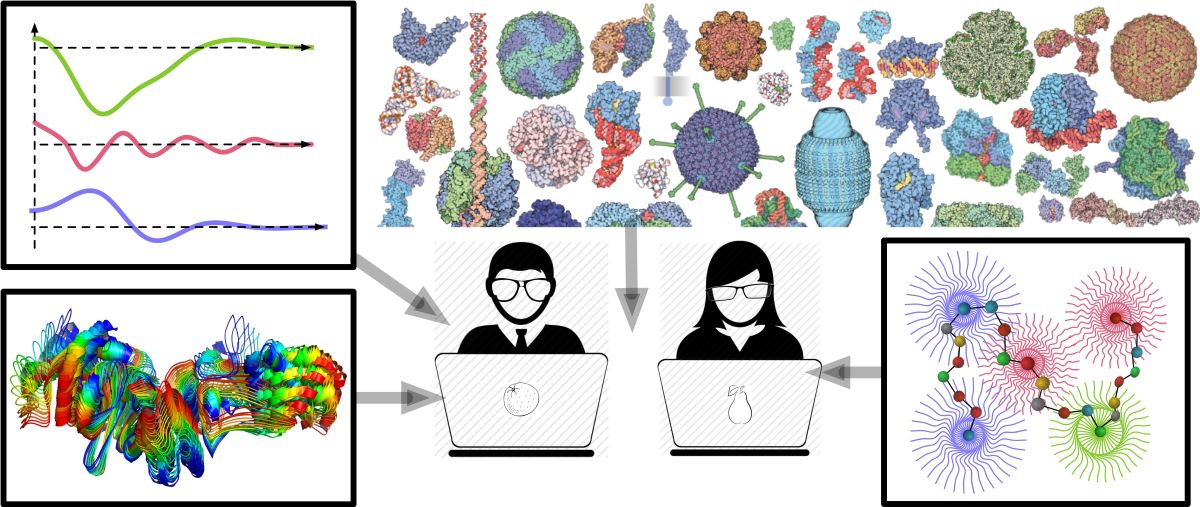Speaker
Description
Rotary ATPases are multisubunit enzyme complexes that couple synthesis or hydrolysis of ATP molecules with transport of ions across a membrane. Their transmembrane part includes a homo- or a heterooligomer of c subunits called a c-ring, with a patch of several lipids confined inside it. Little is known about this patch; it is usually not well resolved in experimental structures, but it is clear that the lipids in it are displaced relative to the surrounding membrane. Here, we show that a protocol involving coarse-grained and atomistic molecular dynamics simulations can be used to obtain a model of the rotor ring protein-lipid assembly that fits well the experimental densities. We then study the mechanism of self-assembly of tetradecameric spinach chloroplast ATP synthase c-ring and demonstrate that c subunits display unusual asymmetric hydrophobic mismatch. Monomers and partially assembled oligomers cause a deformation of the surrounding membrane, which results in their mutual attraction. Because of asymmetry in the deformation, the subunits assume a relative orientation that favors correct assembly of higher-order oligomers and, eventually, of the whole ring. We estimate the binding energies of different oligomers and build a model for the complete assembly process of a c-ring starting from individual protomers. Presented modeling process and biophysical considerations are likely generalizable to assembly of other membrane protein complexes with high-order rotational symmetry.
| Submitting to: | Integrative Computational Biology workshop |
|---|

